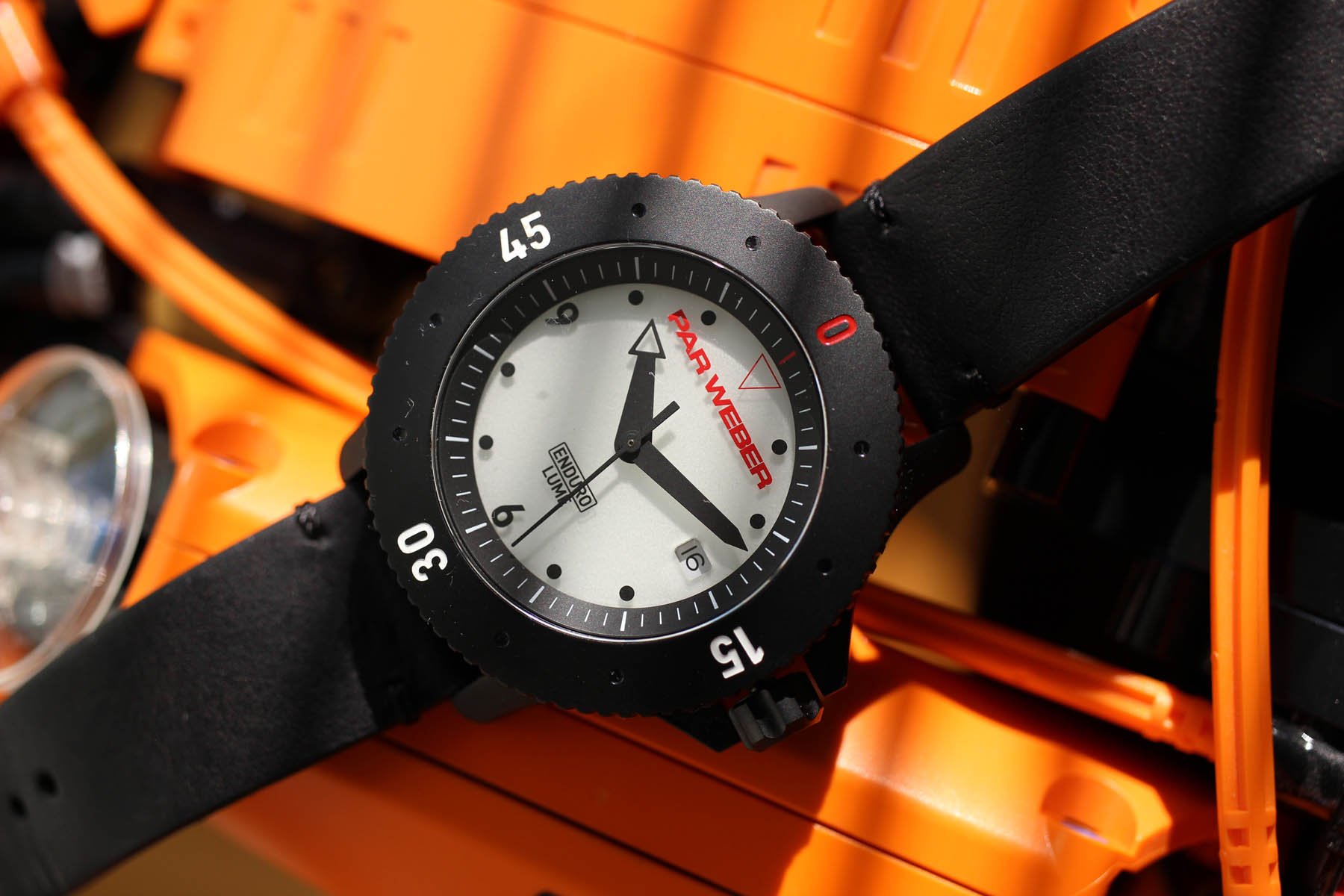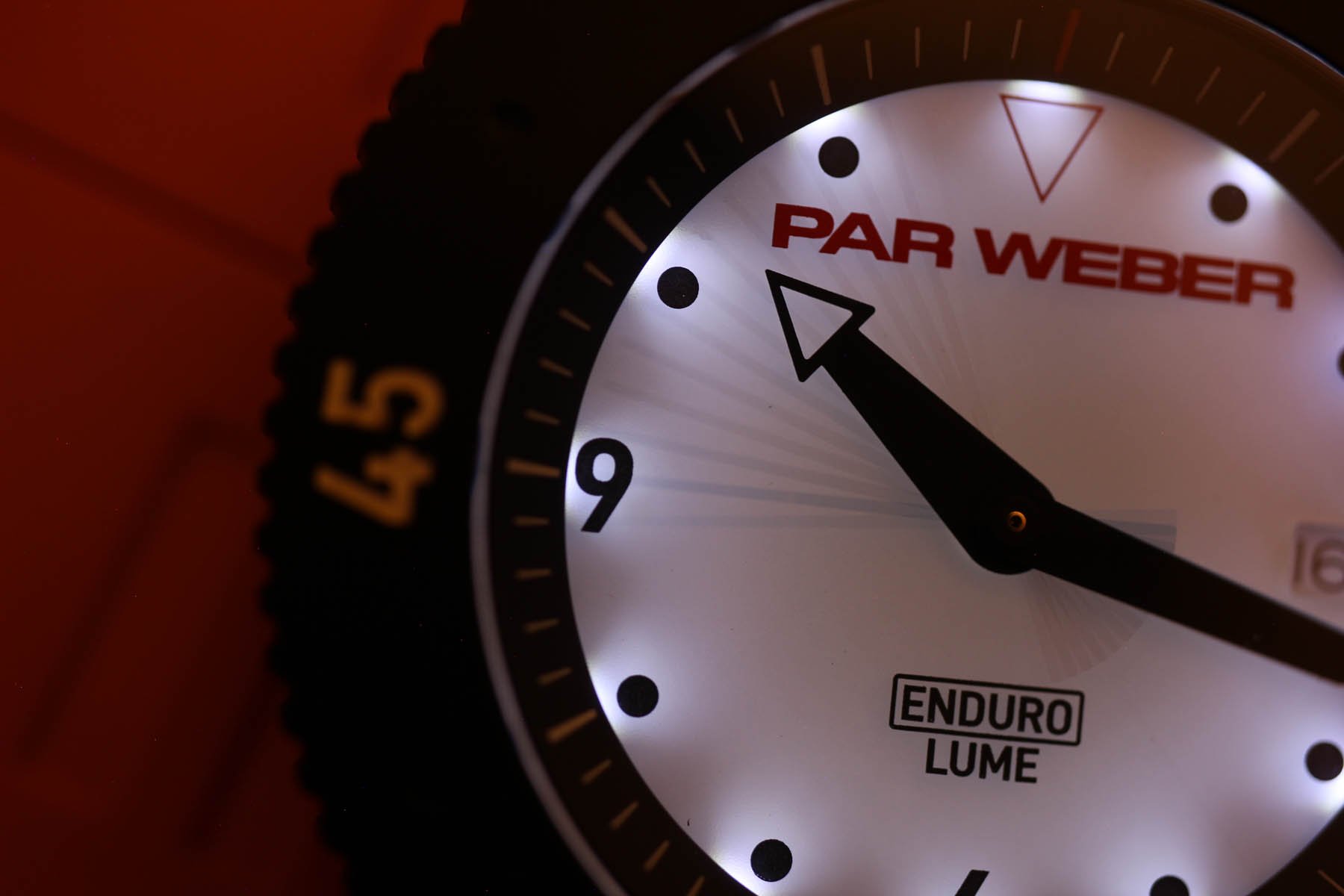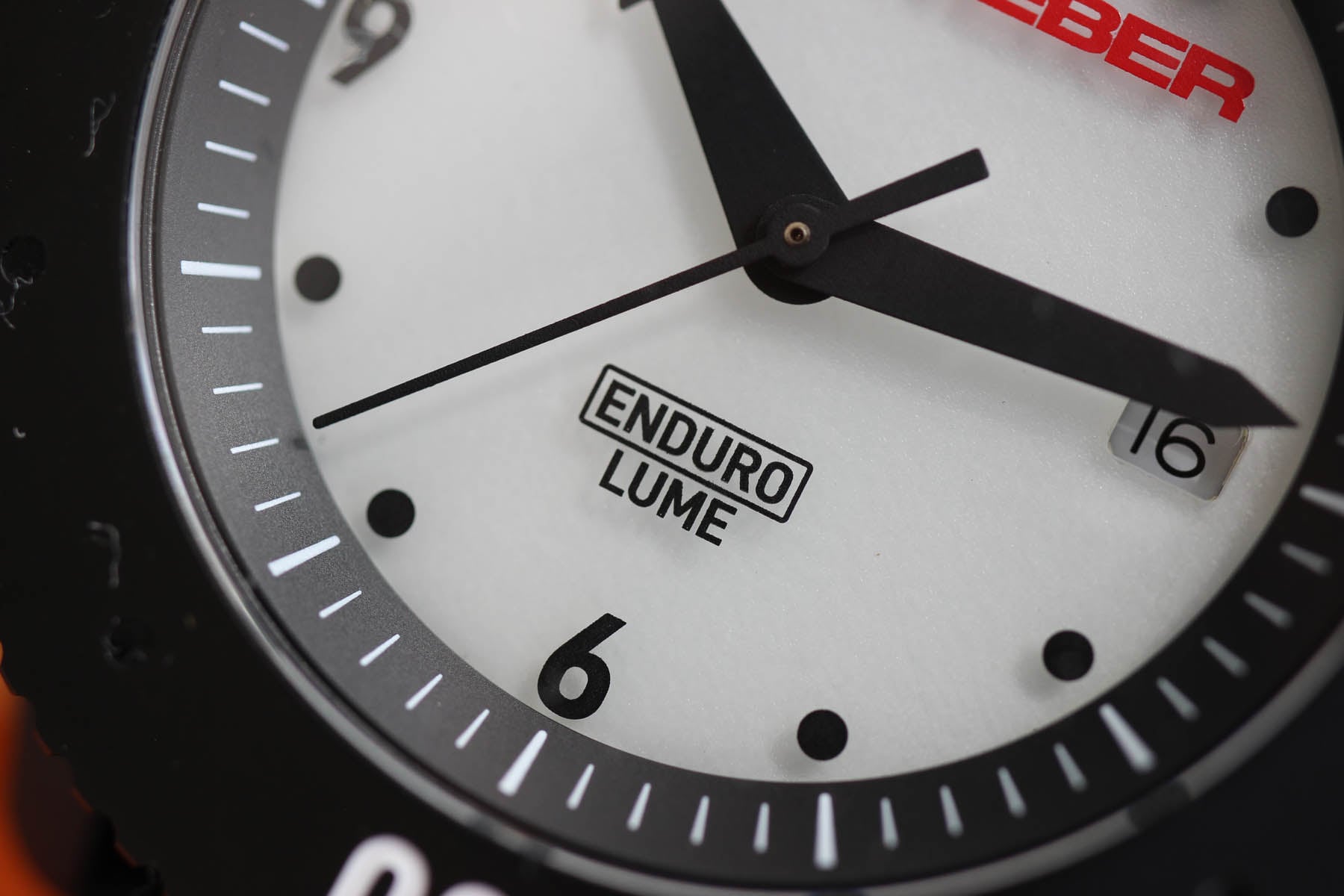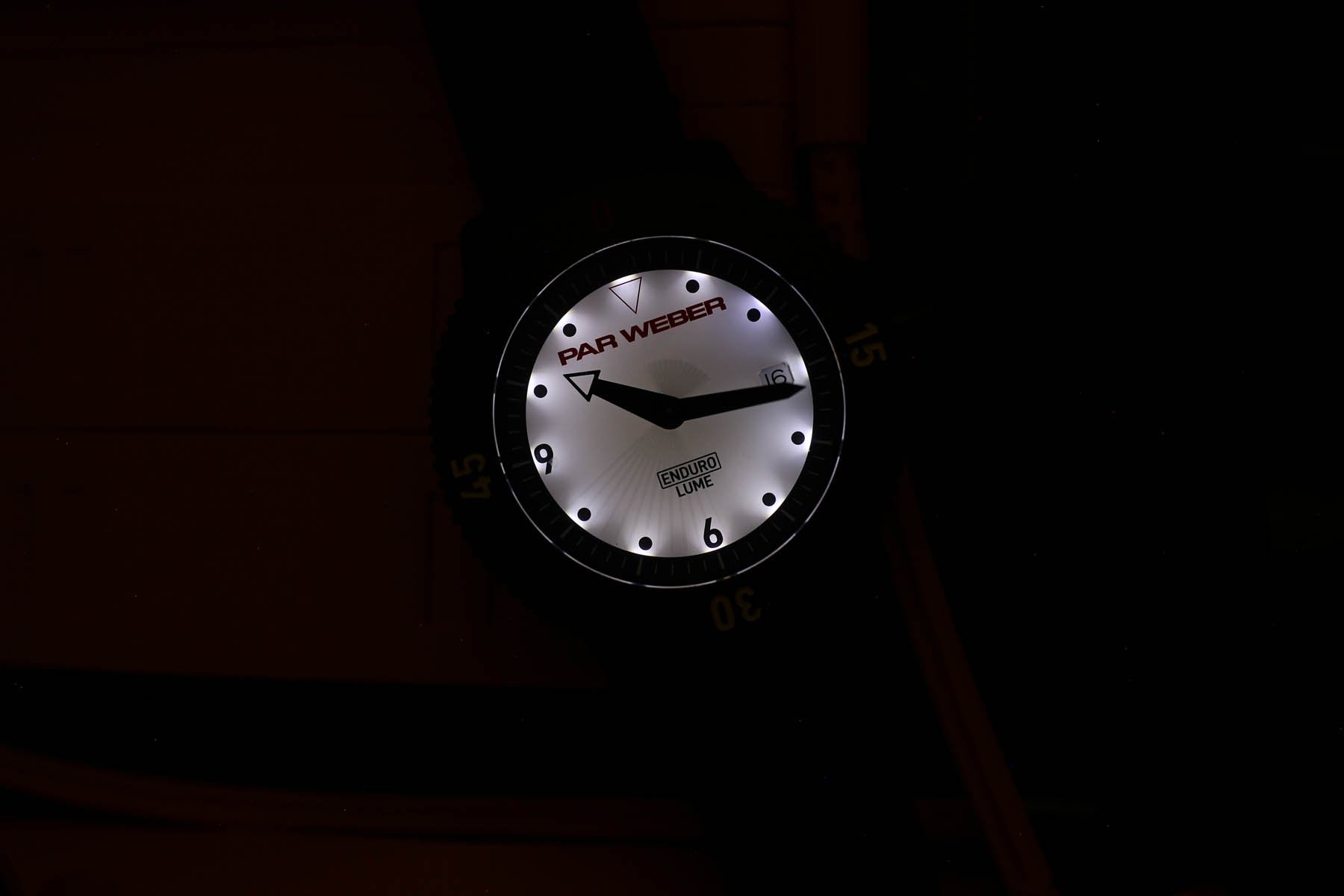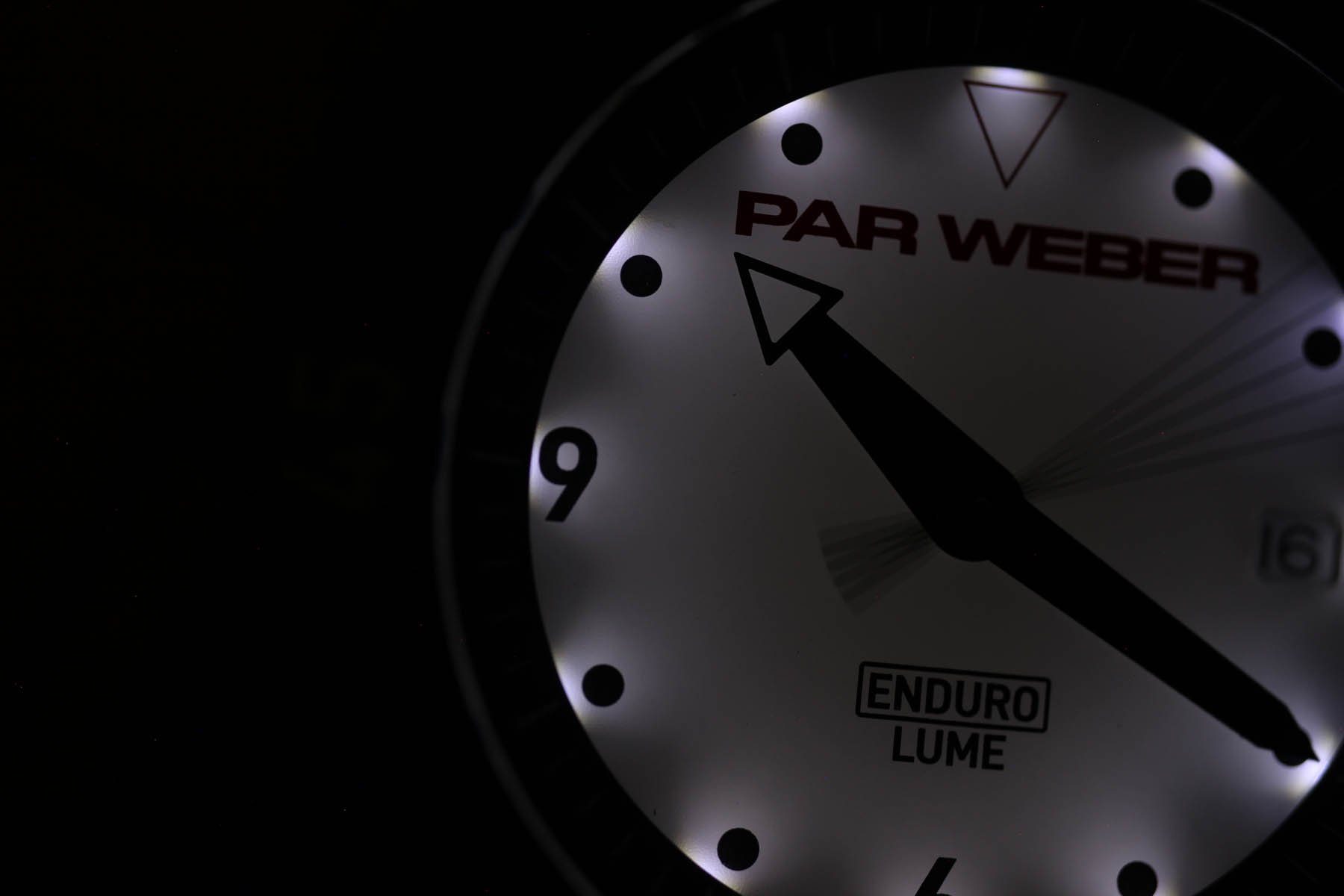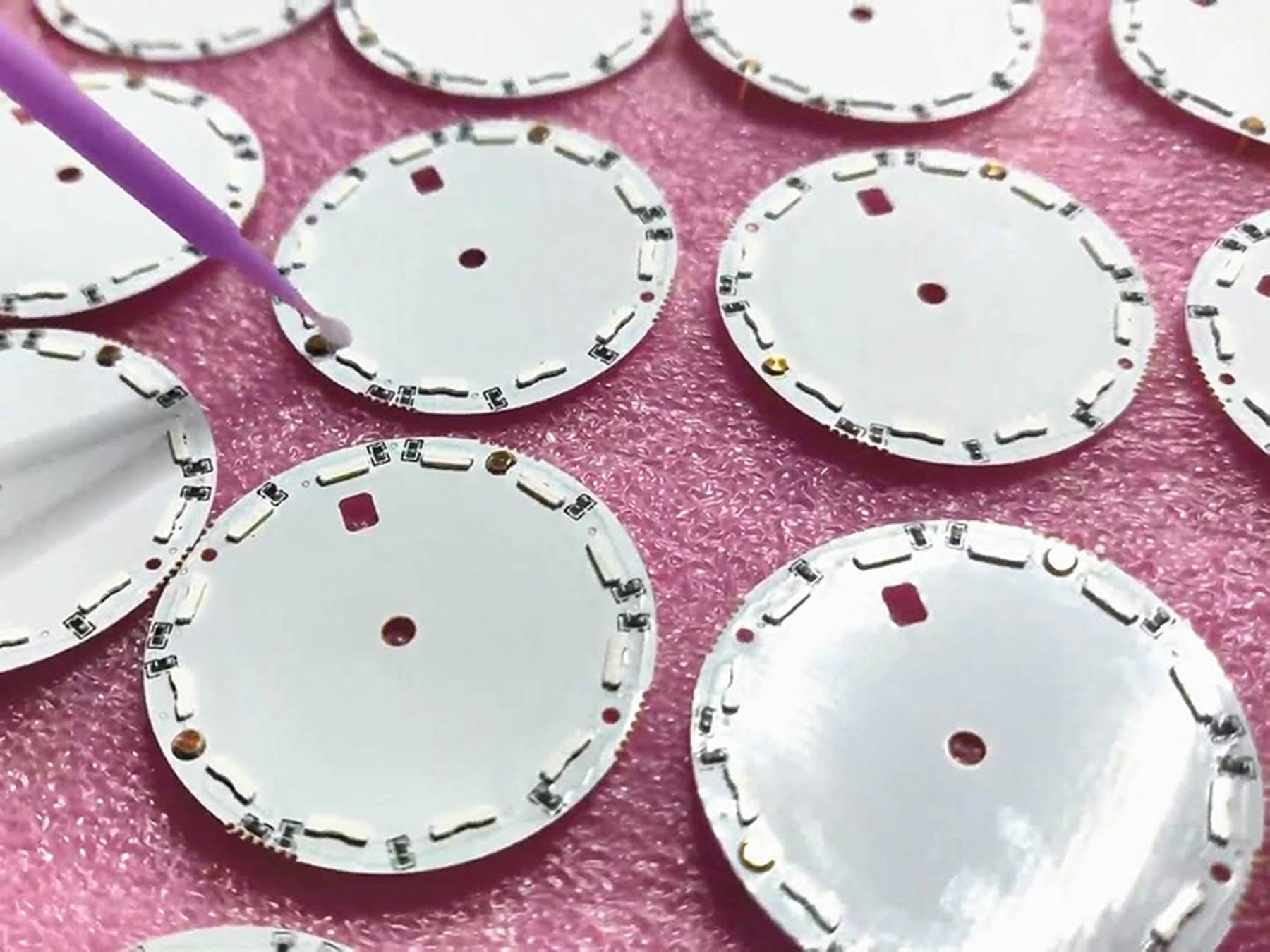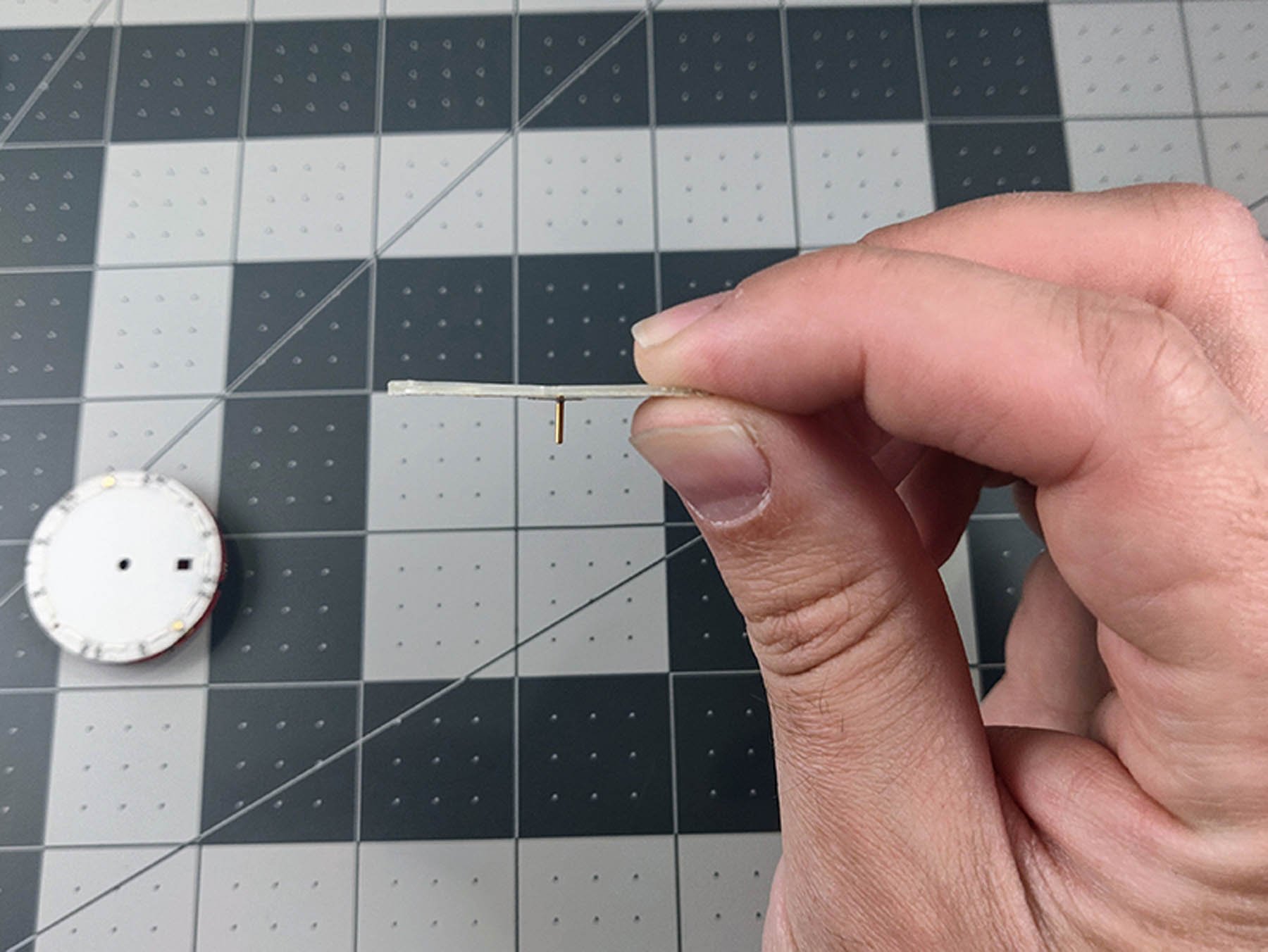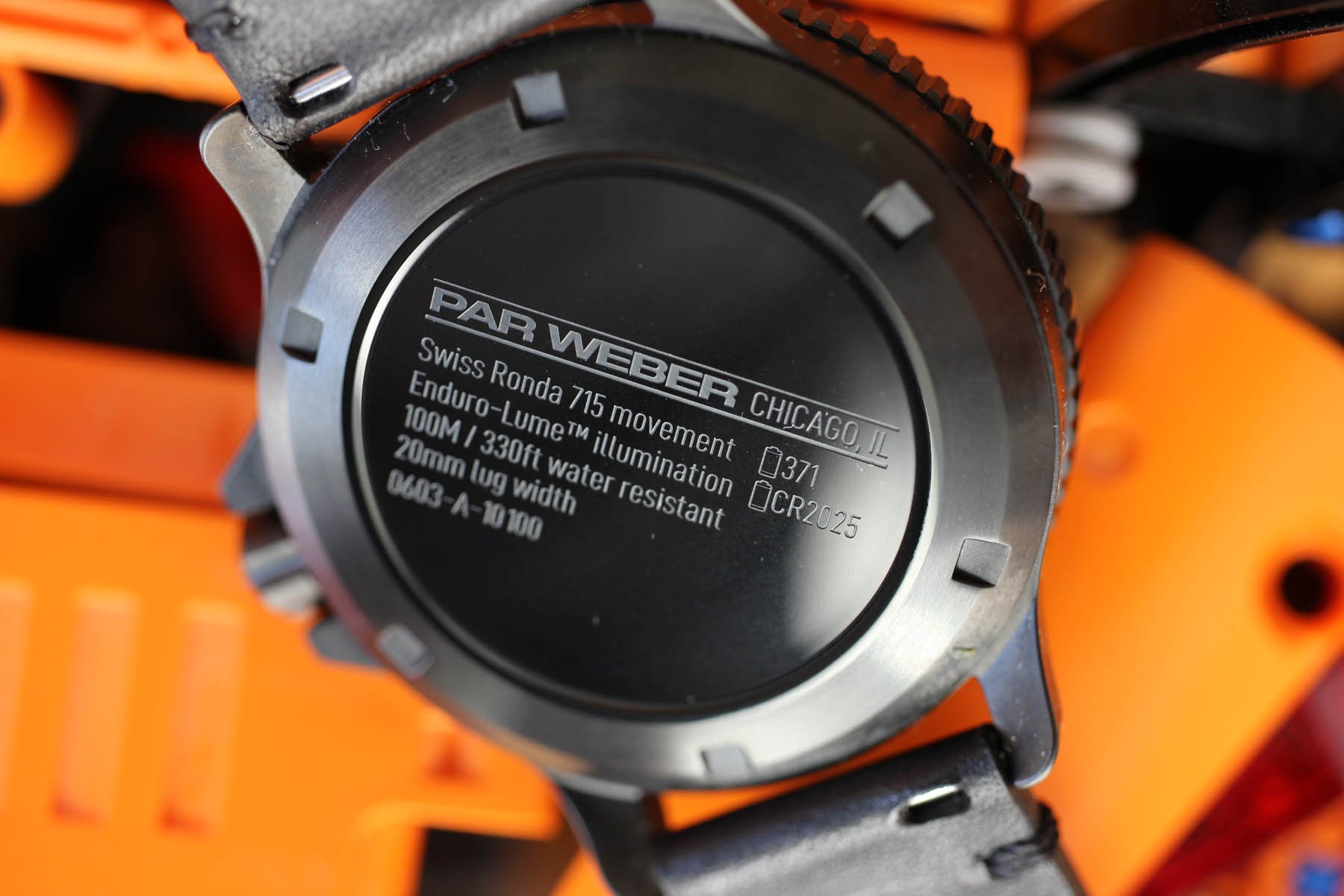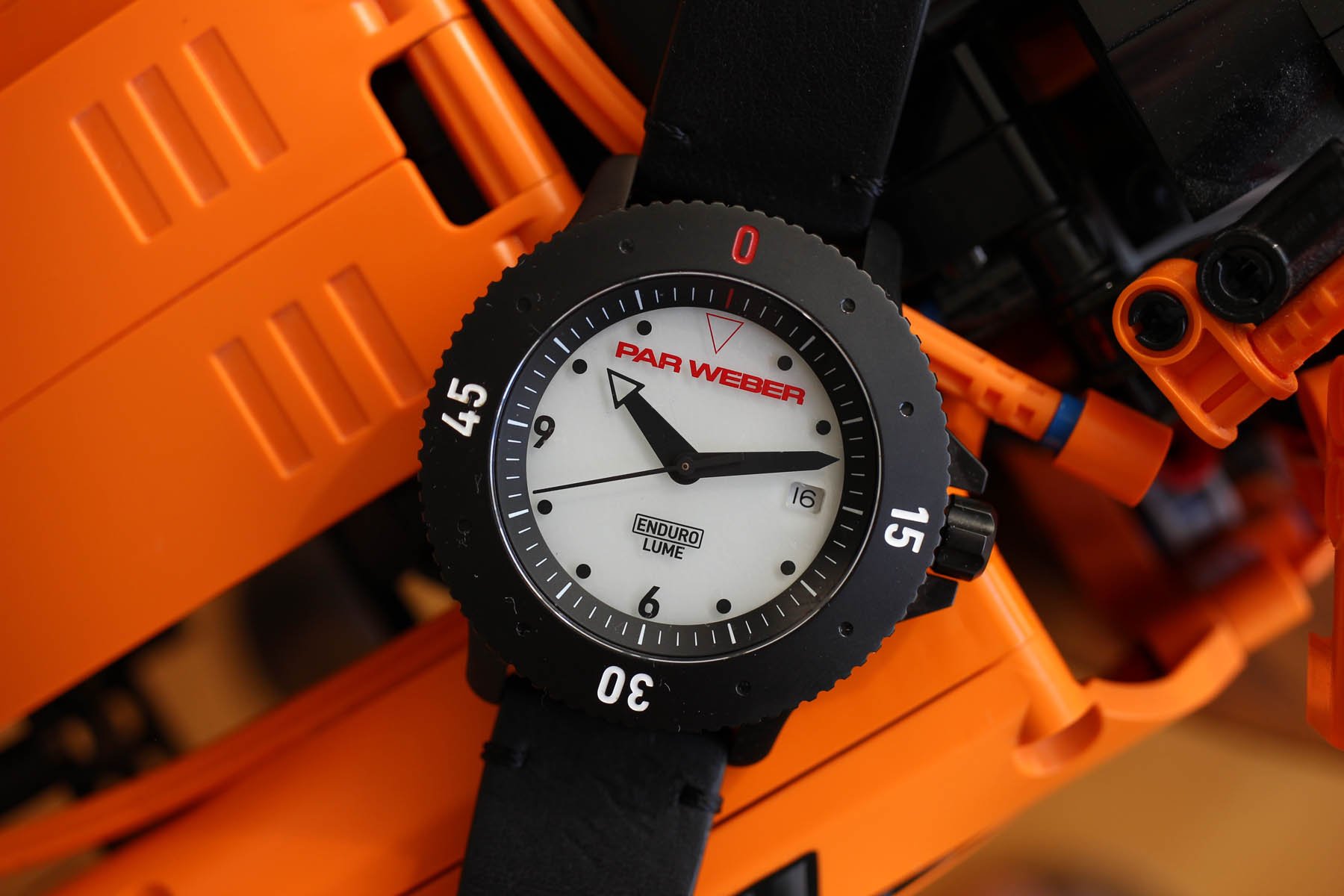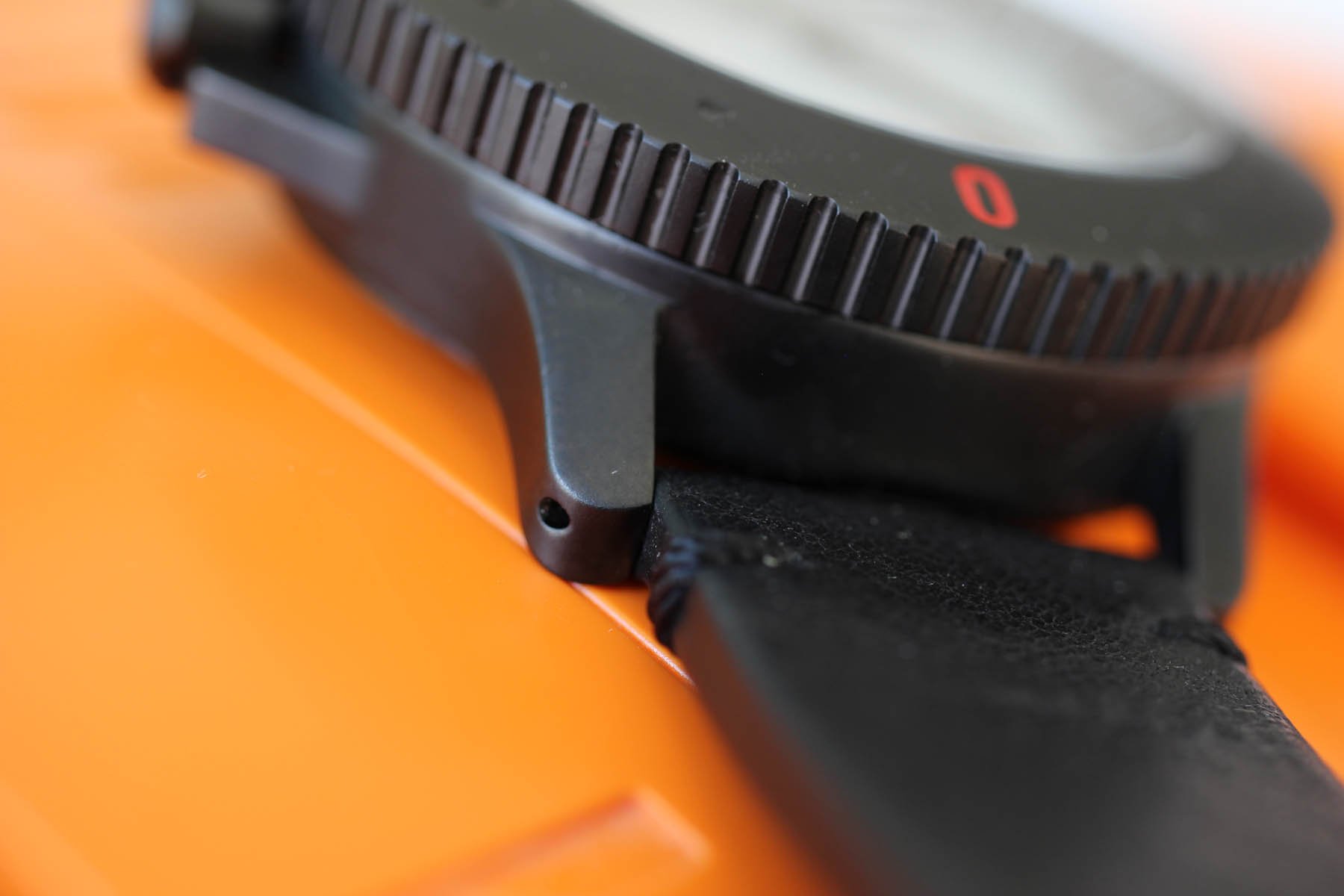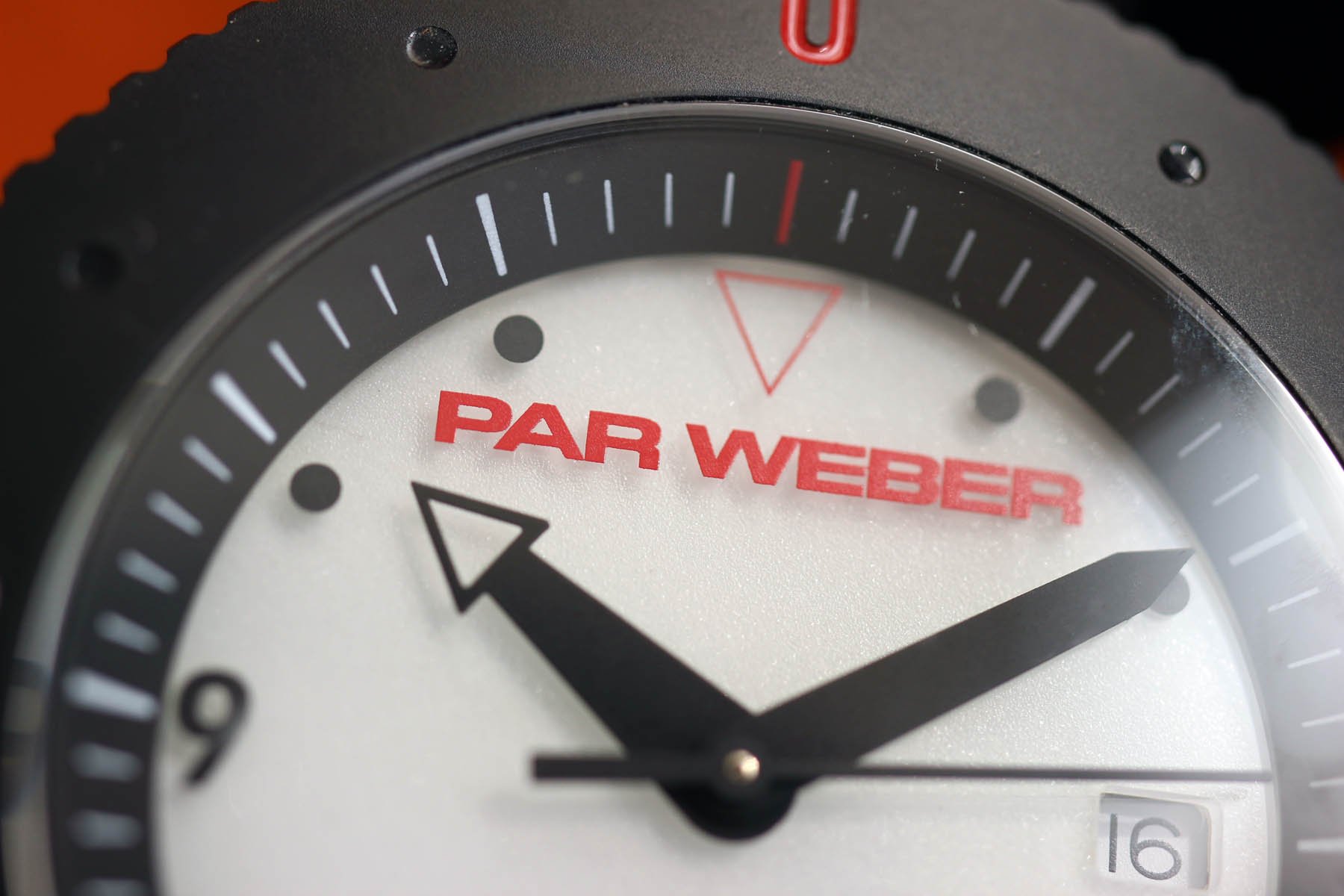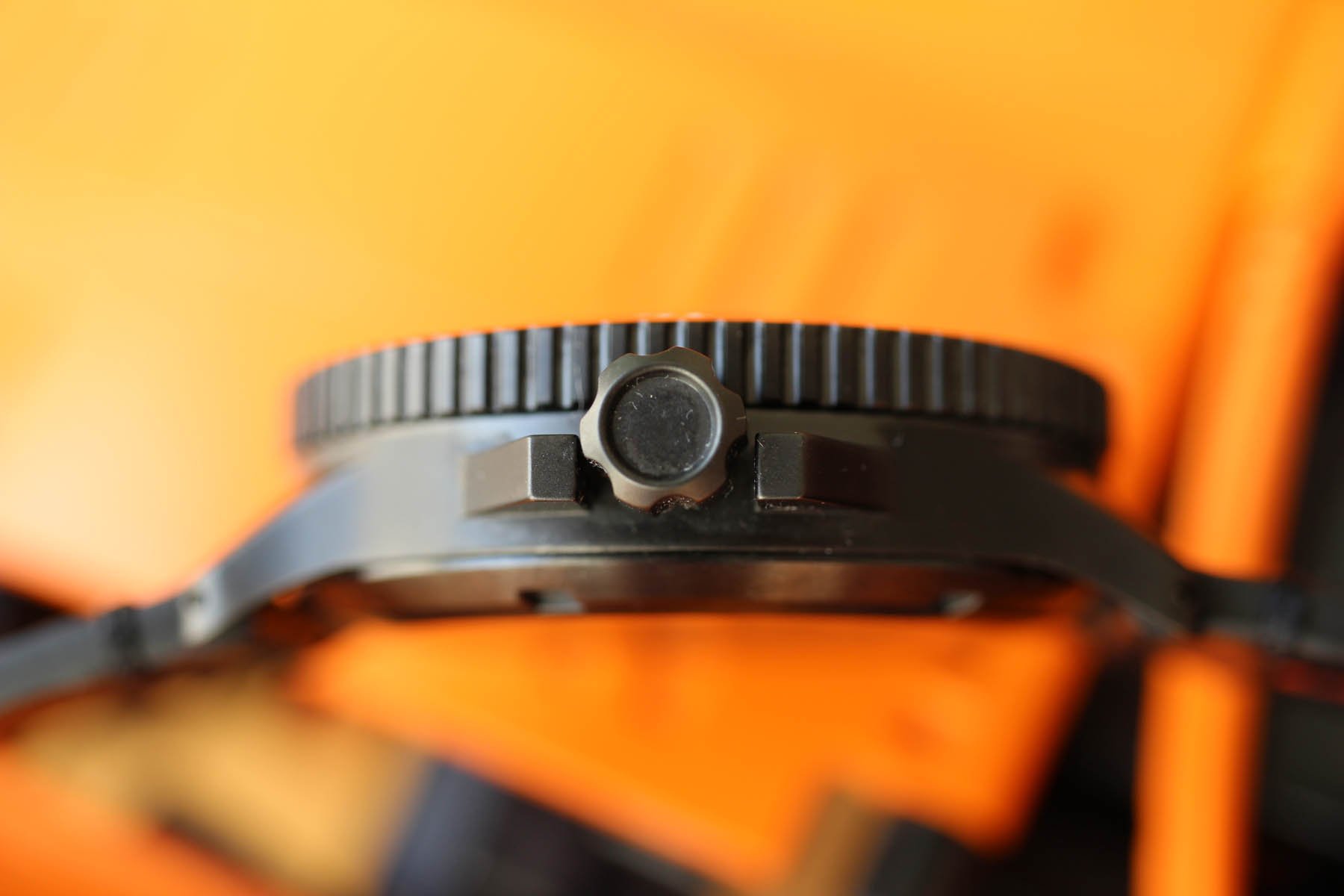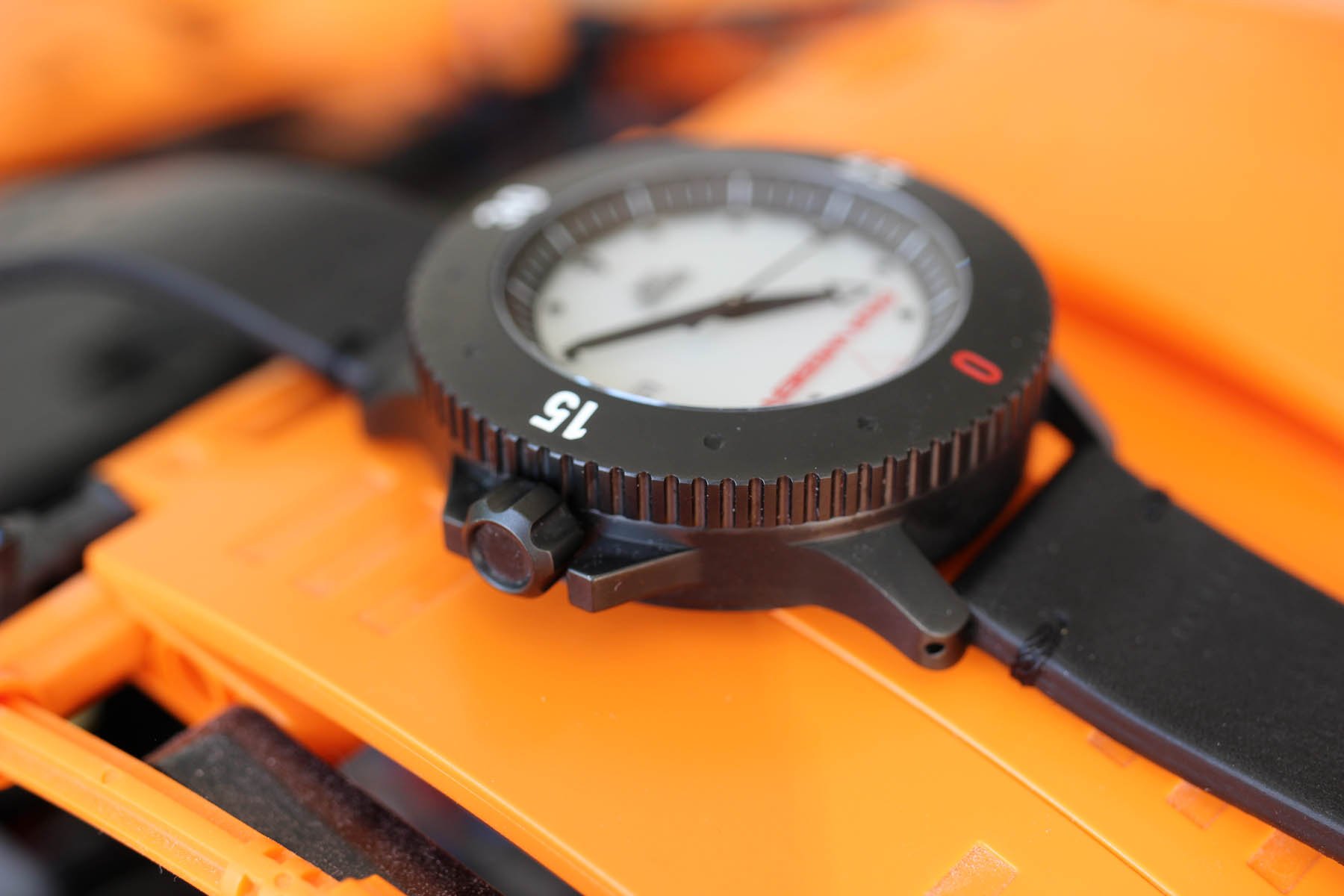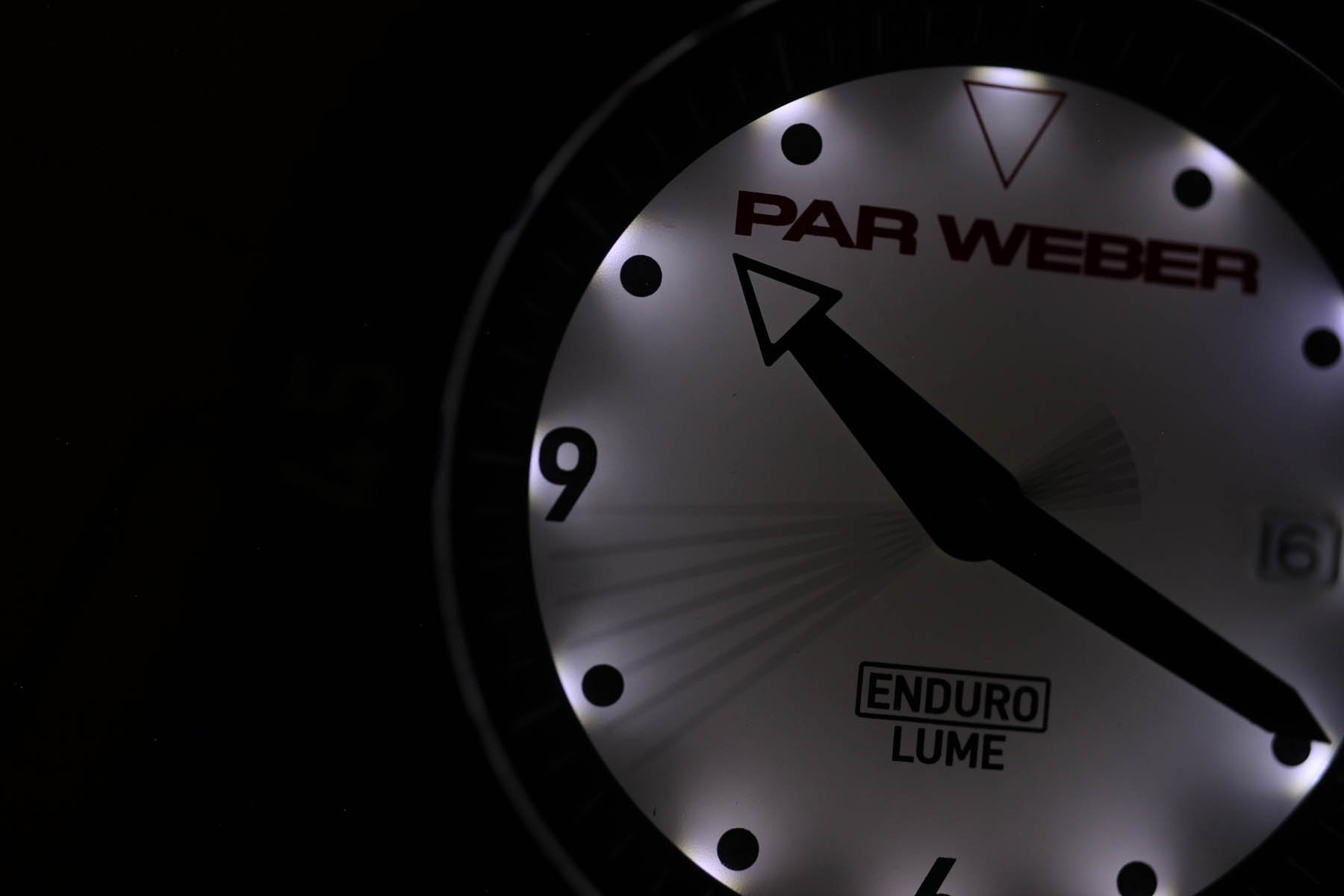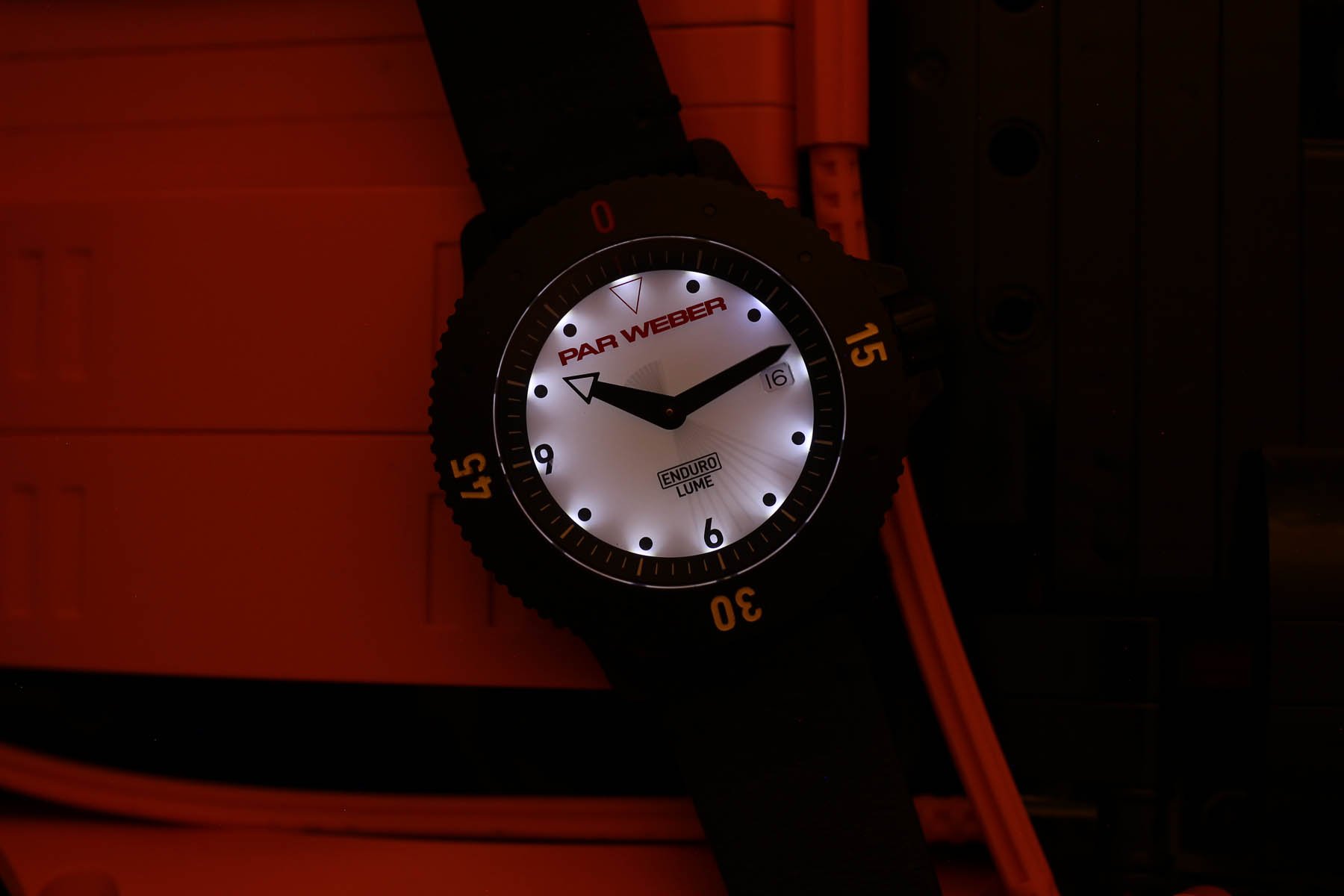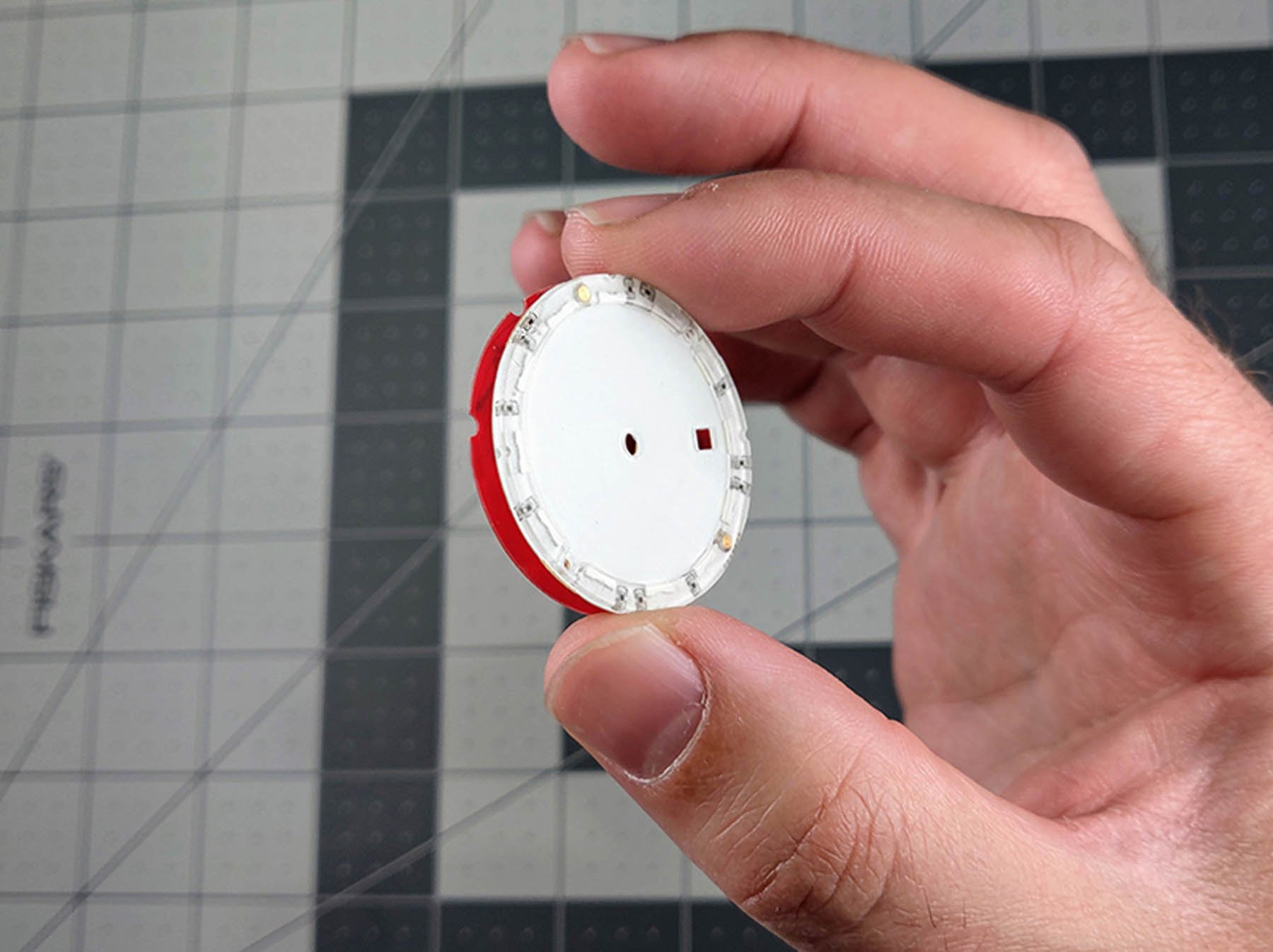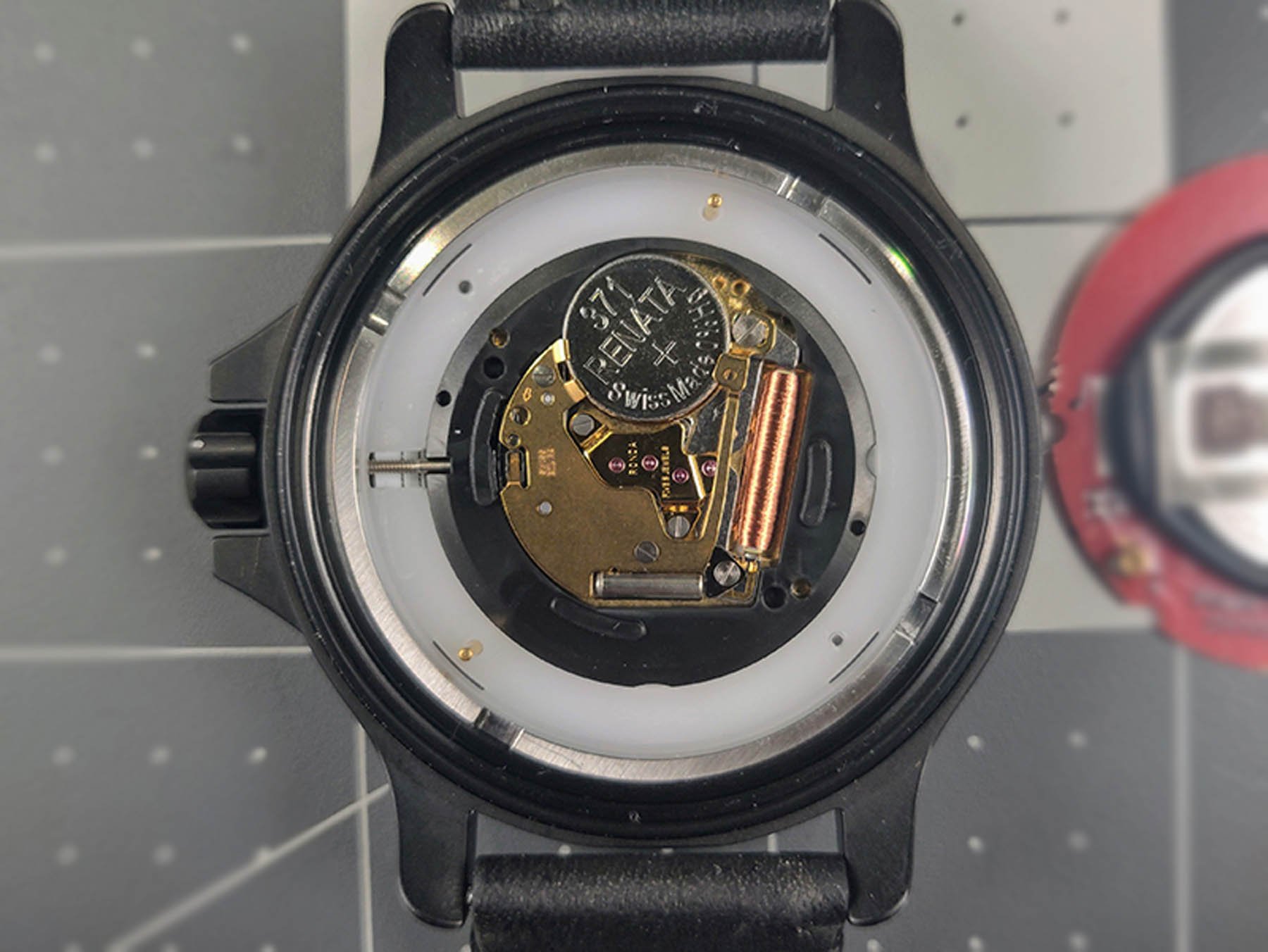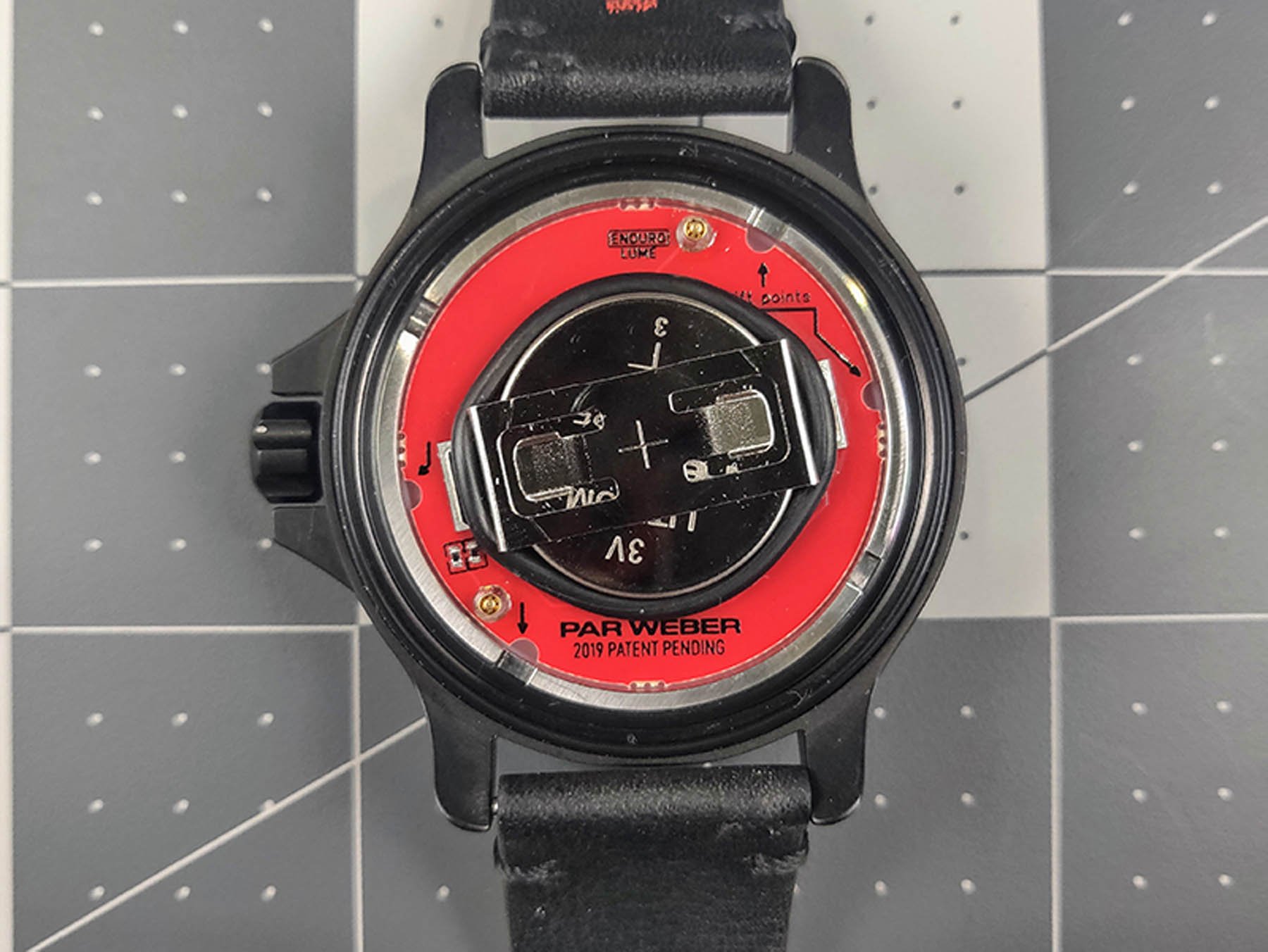Hands-On With The Always Illuminated Par Weber Coefficient Watch
It started off with one of these random messages that pile-up in the Fratello inbox. I picked it up and I couldn‘t have been happier about it. This is not only the story of an innovative watch but also the story of a hardworking dreamer with no previous experience in the watch business. People thought he was crazy and professionals told him to forget the idea. The idea to create an “always-on“ battery-powered illuminated watch. Two years later, here it is. The Par Weber Coefficient with Enduro-Lume system.
“I think my wife knew it was becoming an obsession when the basement perenially smelled of burning solder and custom-made circuit boards were arriving at the house on a weekly basis,” says Jon Weber, who never let his idea of a watch with “always-on” illumination technology go.
It was not a pre-fabricated startup affair or a half-baked business plan for quick Kickstarter success. Two years ago, Jon became a father and his son Gabriel was born 10 weeks early. With a newborn barely weighing a kilogram, there was a lot of night feeding as premature babies have difficulty learning to breastfeed. When you wake up six times a night, you want to know what time it is. I completely understand why button-activated LED lamps that require manual activation were not good enough for him. I had the exact same struggle when our daughter was born prematurely as well.
Par Weber vs. others
Of course, tritium tubes already exist, but as functional as they are on paper, their real-world performance can often leave one wanting. Jon desired brighter illumination that would light up the entire dial. He also didn‘t like that tritium tubes fade over time and eventually die after 10-20 years. Jon kept dreaming about some low consumption LED technology that would make it possible to illuminate the watch continuously while achieving incredible battery life. I am not surprised that most people with a background in electronics or LEDs told Jon “it won’t work“. It turns out those naysayers were just pouring fuel onto the fire…
During an intensive six month R&D period, Jon and his team created around 250 prototypes. This phase included the creation of experimental circuits, custom PCBs, subassemblies, LEDs, or fully-built illumination units. Jon never stopped believing that there was a way through. “We considered many paths. But the standard LED kept showing up as one of the most energy-efficient light generators there is.“
Power challenge
Most LEDs are rated to perform at 20 milliamps. To achieve years of battery life, Jon knew he would have to work with less than 1/1000th of the rated power. That led to a challenge to produce any light at such low power levels. The only way to reliably determine which LEDs were potential candidates was to physically solder them onto a board and test them under real-world conditions. “We have literally hundreds of different LEDs that we trialed. This process was painstaking.“
With no high-power adapter connected to the watch, Jon could not allow wasting any light. His team experimented with a number of different light guide materials such as laser-cut acrylic and glass, thermosetting epoxy resins, or precision cut prefabricated light guides. Each approach had trade-offs across efficiency, uniformity, and the ability to manufacture at scale. “We ultimately settled upon a precision molding solution that enables the entire unit to be embedded within the diffuser, which is the ideal configuration to maximize the use of the light generated by the system,“ explains Jon.
First impressions
I remember that I picked up Jon’s email because I found the design of the Par Weber watches attractive. With a few delays in deliveries due to the COVID-19 situation, the initial launch got postponed. What you see here is the first pre-production prototype for the press and we are excited to be the first to see it in the metal. The real watch fulfilled and even exceeded my expectations. The chunky black PVD case with a 14mm height and 48mm lug-to-lug sat surprisingly well on my wrist, even though I usually sport smaller and thinner vintage watches.
Fifty shades of white
Under direct light, you won’t notice that you are looking at a permanently illuminated watch. During the day the dial changes a lot. You can see a glossy white glass or a more „foggy“ white dial at times. As the advancing night eats away at the day it changes to a light grey… until you start to realize it‘s actually glowing. Promotional pictures can be tricky, so here is how I see it when it’s really dark outside.
When you are in full darkness and your eyes are night-adjusted, the dial glows evenly, just enough to be able to read the time. I would compare the effect of dim mood lighting. Don’t expect an interrogation-style-light or a dial that you will use to guide you on your next nightly fridge raid. I set my camera during the shooting in a way that would realistically capture the illumination you might expect. This would be it:
How it works
For those, who might consider a purchase, I pushed Jon to reveal as much as possible about the technology while still protecting the know-how. The illumination system is currently patent-pending and has been given the name Enduro-Lume™. “We use 12 semiconductor emitters, essentially specialized LEDs, which are concealed around the perimeter of the dial at each of the hour indices,“ explains Jon.
Many people turned Jon down due to the challenging requirements.
The LED module with a precision-made optical diffuser and a battery module “embrace” the movement. The circuitry that runs the Enduro-Lume system is spread out across these two components. The electronic components are not manufactured in China but carefully selected from assembly houses in the United States. Many people turned Jon down due to the challenging requirements — “Too small. Too thin. Too fiddly.” Finally, we found a partner in Texas that managed to work miracles with our paper-thin circuit boards.“
Focus on quality
Jon is a passionate man. He was determined to do everything as well as it could be done. There are no shortcuts here. “We send components to our electronics manufacturer, receive the assembled pieces back in Chicago, clean, and do final hand finishing. Then we send it on for the optical diffuser manufacturing, and then we do another round of hand finishing before sending the completed units to Switzerland for assembly into the timepiece.“ Understanding the laborious process behind the production, and not even factoring in the investment of time, the $599 price tag seems justified to me.
The case is the only component outsourced to Asia. Once Jon realized that with so many USA-made/sourced parts the brand wouldn’t meet the 60% required for “Swiss made” labeling, he took time to think. The case sourced in China through Swiss partners allowed him to keep the price point lower. But many of the precision parts, as well as the movement and the dial are Swiss made.
Battery duo
A single battery to power both the illumination system and the movement itself proved to be impractical. The movement uses a 371 battery, which is standard for a Ronda 715 and the illumination system is powered on its own, by a separate type CR2025 battery. By the way, just look at the case back — what a wonderful job. No extra adornment or decoration, just useful information for the wearer in a perfect and modern style. Notice that even lug width is mentioned. And it’s neither ridiculous nor redundant intel if you realize how many times you searched for a ruler when you were buying a new strap.
Black, white and red design
The more I wear the Par Weber, the more I like it. It’s traditional in its case construction, yet original in its design. The design was inspired by cameras and lenses. The bezel is extra-tall, but minimalistic with simple timing markings. It rotates in both directions and the rotation is surprisingly quiet. It’s in line with the mysterious “ninja“ aura that the Par Weber creates. The dial seems disproportionate to what your eyes are used to, but the reason is “glowingly“ clear. After a few days, I got used to it and now I even find it attractive.
The only detail that bugs me is the huge red Par Weber logo. I would have made it smaller, and that is in spite of the fact I am a huge fan of the make-the-logo-bigger marketing approach. If not smaller, then I would at least put it in two lines, so it would not stretch that much across the hour indexes. With the three-lettered word PAR it would look nicer and less disturbing if it was in two lines. The triangle at the 12 position would also be more visible. I also find the red triangle too thin and too recessed.
True to its name
The Par Weber Coefficient. Par refers to Jon’s middle name Parnicky, which was his mom’s and grandfather’s name. Jon still keeps his grandfather‘s Omega Seamaster that he got in the 1960s from Jon’s grandmother. The model name Coefficient underlines the functional and purpose-driven soul of the watch. Notice the lugs and particularly the strange point on which they are drilled. I can imagine that being a deal-breaker for few customers, but Jon’s answer without hesitation: “It may be a bit odd to see the holes from the outside of the lug, but it’s worth the tradeoff for practicality.“
“It gets cold in Chicago,“ another witty and pretty self-explanatory answer I got from Jon. This one came after I asked about the high-mounted crown with offset crown guards. The protruding crown struck me immediately after unboxing. I even bothered me slightly and I thought it might just be a prototype bug.
“No, that’s by design. We wanted a very tall bezel grip to make it easy to operate with gloves on or off, so we had to move the crown outside the diameter of the bezel,“ says Jon with such confidence, that I was immediately able to accept a protruding crown as the new standard. A bit abnormal, but the truth is that I don’t need to claw at it with my fingernails to set the date.
Ultimate question
The last question left was how long the Par Weber Coefficient and its continuously illuminating system lasts. Batteries are synchronized to have roughly the same lifespan so if you need to replace one, you should replace both. That way you don’t need to open the watch more frequently than usual. Can the LEDs burn out? “Yes, they could, but we don’t expect this to be an issue for the Enduro-Lume. It should continue to operate for many, many, many years because it is driven at such an extremely low level of power.“
Build to last
Each LED is driven independently and receives its power independently. So no single LED failure can cause the whole module to fail. But Jon doesn’t anticipate any problems as the module is well protected. „The diffuser element encases the LED module and provides much of its durability and even gives it reasonable water resistance.“ Encouraged by his words I didn’t bother to take the Coefficient off for evening showers.
Last thoughts
As a child of the 1980s, I have a big crush on any electrically lit watches, especially ones with a mechanical movement. Just read the fascinating story about the legendary Tourist Everlight or the Sphinx extravaganza. You can imagine the big smile on my face when Jon disclosed that this technology is compatible with both quartz and automatic movements. I feel it will come sooner or later, but I will not wait around. I played with the Par Weber Coefficient for a week and already decided I am buying one. Thankfully, I don‘t need to wake up to our daughter anymore, but it might come in handy when we welcome a sibling into the world. Hopefully soon!
Follow me on my Instagram @rosputinsky_tomas

